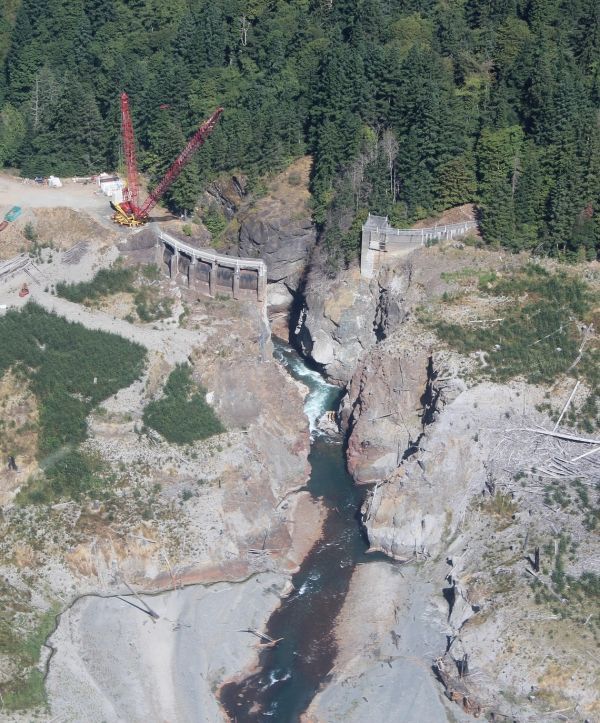Starting in 2011, the National Park Service removed two obsolete dams from the Elwha River in Olympic National Park, Washington. It was the world’s largest dam-removal project. Over the next five years, water carrying newly freed rocks, sand, silt and old tree trunks reshaped more than 13 miles of river and built a larger delta into the Pacific Ocean.
Scientists from the U.S. Geological Survey and six research partners recently published a paper summarizing a half-decade of changes to the shape and sediment of the Elwha River after dam removal.
Of the 33 million tons of sediment trapped behind the dams, about 8 million tons resettled along the river or at the mouth, and another 14 million dispersed into the ocean. It would take more than 70 dump trucks running 24 hours a day for five years to move that much dirt and debris downstream. Piled up, the sediment would form a cone about one-third of a mile in diameter and taller than a 50-story building.
Continue reading at USGS.
Image via USGS.


